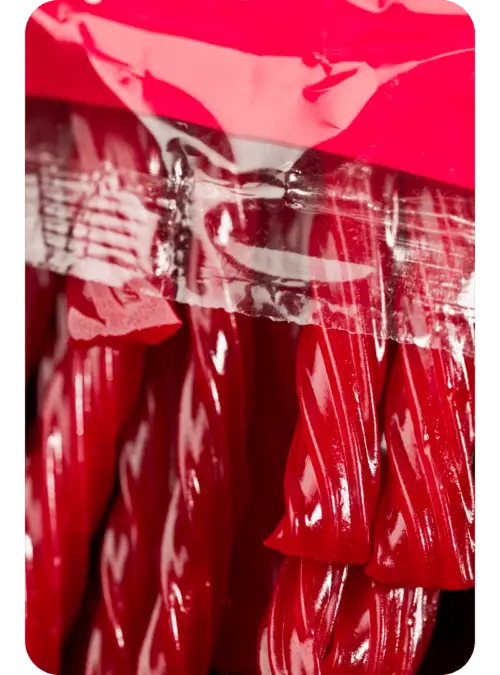Overwrapping
 Overwrapping is a versatile packaging option that can greatly enhance visual appeal, shelf life, and bundling options in the food industry.
Overwrapping is a versatile packaging option that can greatly enhance visual appeal, shelf life, and bundling options in the food industry.
Overwrapping, similar to cellophane wrapping, is the application of a second layer of packaging over a product. This allows for optimal freshness and hygiene while offering a wide range of other benefits. It can also be used to combine two or more small packages into a multi-pack.
Benefits of Overwrapping
Besides its ability to be used as a combiner, which makes it ideal for applications such as large packages of bottled beverages, overwrapping can greatly enhance traditional forms of packaging — and, in some cases, can even eliminate the need for them altogether. Through the use of flexible materials and custom sealing, overwrapping allows for the following benefits in the food industry:
- Aroma control: Overwrapping can be used to create a near-hermetic seal to effectively prevent cross-contamination and the release of odor.
- Tamper protection: Applying a seal nearly impossible to duplicate once broken will protect against contamination and easily alert workers and consumers to unsafe packages.
- Extended shelf life: Protecting contents from environmental hazards and airborne bacteria, overwrapping allows for longer shelf life, saving companies both time and money.
- Reduced costs: By eliminating the need for more elaborate designs or heavier packaging materials, overwrapping results in lower costs and simpler labor operations.
- Ease of use: Easy-open or resealable options using design elements such as tear tape allow for simple, convenient user access.
- Custom promotional features: Overwrapping provides opportunities for enhanced hand-wrapped or high-end design effects, as well as product bundling and the addition of eye-catching marketing messages.
- Eco-friendliness: Overwrapping utilizes less packing material than traditional solutions, and is available in biodegradable and eco-friendly forms.
Compared to shrink wrapping and other wrapping styles, overwrapping provides a glossy finish that boosts shelf appeal with a professional look. It supports high-quality graphic printing, allowing for vibrant, eye-catching designs and the flexibility to feature unique branding and product information, including essential details like nutritional facts.
Polyolefin films, in particular, offer a wide color range and design intricacy, enabling brands to create visually striking and informative packaging that captures consumer attention and aids in purchasing decisions.
Overwrapping Materials
A wide range of materials can be used to customize overwrapping packaging. Depending upon the application, the following materials can be used:
- Medical-grade film
- FDA-approved food-contact barriers
- Standard clear, colored, or printed film
- Easy-open films
- Tamper-proof or security film
- Dust-, oil-, or grease-resistant material
- Water-resistant material
- Specialty merchandising or branded films
Work with Econo-Pak To Overwrap Your Food Product
Fresh aesthetics, reliable performance, and cost efficiency are at the heart of a good packaging design, and the team at Econo-Pak Team is committed to developing customized solutions for your specific products. Whether overwrapping for aesthetics, preservation, or standard protection purposes, we’ll work to find the best way to make your packaging stand out.
With top-of-the-line technology, over 40 years of family business experience, and a full team of in-house designers and engineers, Econo-Pak leads the industry in modern food repackaging. To learn more about our overwrapping options, other in-house packaging services, or our custom design team’s capabilities, check out our package design page or reach out to us today.
Let's start scaling.
Is your demand outpacing your ability to package your own product? Then consider outsourcing with Econo-Pak.
With over 40 years of experience working with both small brands and Fortune 500 companies, we are capable of handling your specific dry food product.
Get in touch with our team for a fixed-price quote for your project.








